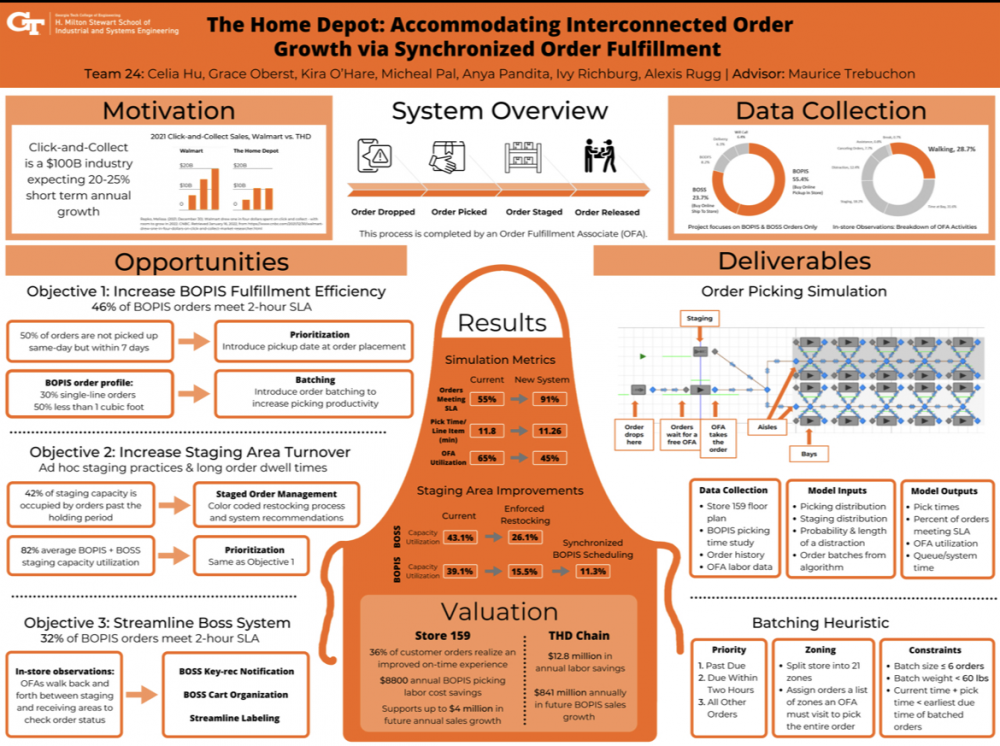Client Context
The Home Depot (THD) is the largest home improvement retailer in the United States as well as a leader in the burgeoning $100 billion click-and-collect market. Total market click-and-collect sales are projected to grow by 20% in each of the next two years (Repko, 2021). It is imperative that THD continue to refine its click-and-collect capabilities to capture this significant market opportunity. This project identifies process and system improvements spanning order capture, picking, and staging based on observations of Store 159 that are generalizable to the broader THD chain. This project focuses on two interconnected order types: buy online pickup in store (BOPIS) and buy online ship to store (BOSS) orders.
Project Objective
This project has three major objectives. Objective 1 is to increase the efficiency of the BOPIS order fulfillment process. Currently, only 45.7% of BOPIS orders are meeting the service level agreement (SLA) of 2 hours from order drop to order stage times, which is due largely to the lack of order prioritization and inability to pick multiple orders at the same time. The team addresses this issue through the introduction of order picking based on a customer need-by date and order batching.
Objective 2 is to increase the staging area turnover rate for BOPIS and BOSS orders, which will enable THD to process more sales as the click-and-collect market grows. Orders are often lost in the staging areas due to clutter from aging orders that need to be restocked; this is caused by failure to enforce order cancelation rules and a lack of strategic organization of staged orders. This is addressed with an introduction of scheduled order pickup and a streamlined restock process.
Objective 3 is to streamline the BOSS order fulfillment process by dropping orders into the system after they are key-rec’d instead of when they arrive at the store, as is the current process. In addition, combining the key-rec label and staging label into one would eliminate the need to print labels twice, thus saving time during staging.
Design Strategy
The design strategy includes analysis of one year’s worth of order fulfillment and six month’s of employee scheduling data for Store 159. The team has collected in-store observations to create a breakdown of the activities of associates performing order fulfillment, as well as placed click-and-collect orders with Target, Walmart, and Lowe’s as part of a competitor benchmarking process.
Deliverables
There are four deliverables for this project: (1) a batching algorithm for BOPIS order picking, (2) simulation results that serve as a proof-of-concept for the new order picking system, (3) a compiled report of 15 recommendations detailing system and process changes, and (4) a cost benefit analysis highlighting the value of proposed changes.


